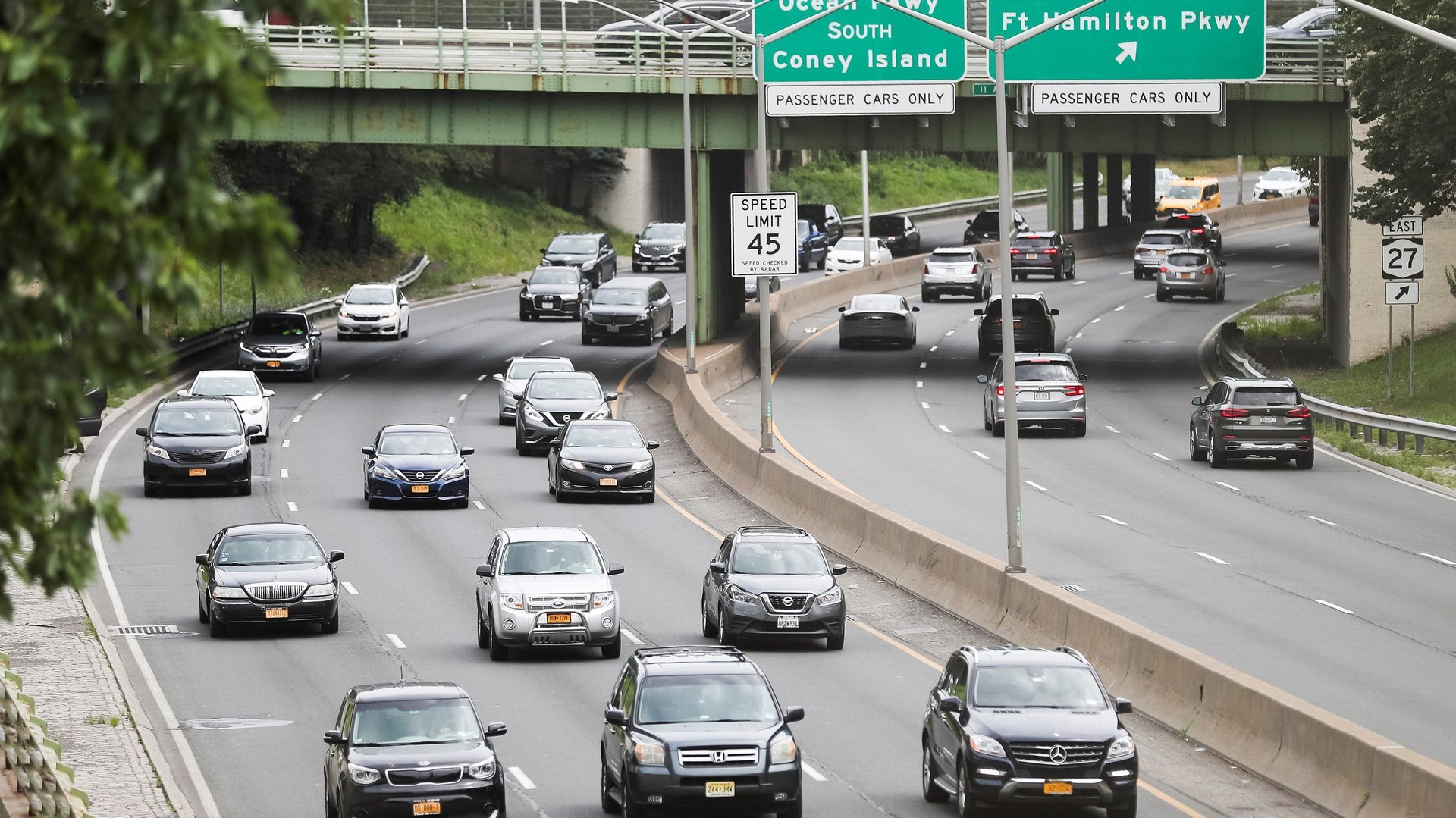States will decide the climate impact of the US infrastructure bill’s road budget
The $1 trillion infrastructure bill that the US House of Representatives is preparing to vote on dedicates the most money to one thing: roads serving cars and trucks. Highways, bridges, and streets would get the lion’s share of the country’s infrastructure spending: $110 billion in new funding over five years.


The $1 trillion infrastructure bill that the US House of Representatives is preparing to vote on dedicates the most money to one thing: roads serving cars and trucks. Highways, bridges, and streets would get the lion’s share of the country’s infrastructure spending: $110 billion in new funding over five years.
This would represent nearly a 50% increase over the roughly $46 billion that the federal government spends on highways each year. While the federal government gets to decide broadly where the money goes—highways or bridges, for example—state politicians ultimately decide what projects are completed (or torn down).
This funding is a once-in-a-generation opportunity—the largest since the highway system was created in 1956—that will dictate what the future of roads and highways look like, and the climate impact of road transportation. After a century of infrastructure serving cars, state and local actors may choose to reinforce a status quo for highways and cars, or decide to reduce emissions by decreasing the footprint of urban highways.
To maintain or build a different future for highways
While most federal highway funding is distributed evenly among states, the state transportation agencies have a fair amount of flexibility in deciding how that funding is spent.
Experts suggest much of the bill’s new funding will go to rebuilding road transportation after decades of insufficient maintenance. Road repairs and upgrades are badly needed as highways constructed in the mid 20th century reach the end of their useful life. Expanding highways is also on the table. For example, Texas, despite mounting controversy, plans to expand part of a highway that runs through central Austin and in Richmond, Virginia, a plan to widen a parkway has sparked protests from the majority-Black community it would encroach upon.
The bill’s outsized emphasis on roads has prompted critics say that it doesn’t go far enough to support other, more climate-friendly forms of transportation like rail and public transit.
But another source of federal funding could take states and cities in another direction and remove crumbling highways entirely. Competitive grants—$16 billion in the bill—offer flexible funding for a wider range of local governments and transit authorities. In combination with formula funding, they can be used to accomplish more ambitious infrastructure projects that go beyond maintenance.
During the Obama Administration, a competitive transportation grant program allowed Rochester, New York, and New Haven, Connecticut to tear down portions of highways and re-connect city centers. In 2019, New York state introduced a $2 billion project to tear down a section of a highway that runs through the center of Syracuse. These highway removal projects benefit communities historically cut off by them, but can also reduce the emissions impact of cars in cities. The current infrastructure bill includes another $1 billion for these types of projects, intended to reconnect communities disrupted by highway construction.
“There is a definite opportunity to not just spend more on infrastructure, but to rethink how we’re spending that money and where it’s actually going, and who it’s actually helping,” says Joseph Kane, a fellow at the Brookings Institution who focuses on infrastructure. “This bill isn’t going to get us out of our cars forever within the next five years. But it does start to plant some seeds that if properly cultivated could lead to real structural changes.”
Climate measures in the bill still need state-level support
The $110 billion in new roads and highway funding would allow states to beyond updating legacy infrastructure and design new infrastructure for climate resilience and community transportation needs. Climate-related funding provisions include:
- $7.5 billion to build out a network of electric vehicle charging stations
- $7.5 billion for zero- and low-emission buses and ferries
- $6.4 billion towards a program to reduce highway carbon emissions
The true climate impact of the bill won’t be known for years. Ultimately, state governments and local communities have the final word on how most of the money earmarked for roads and highways will be spent. State transportation agencies without a strong commitment to change aren’t likely to push through major overhauls of existing infrastructure. Urban highway removal, for example, is something that at least 15 US cities have accomplished in the past, although nearly as many projects have been abandoned. But just this year, 15 more highways were identified as prime candidates for removal.